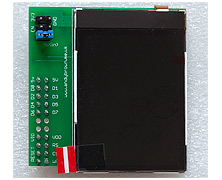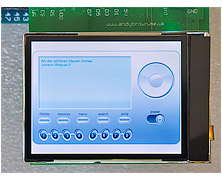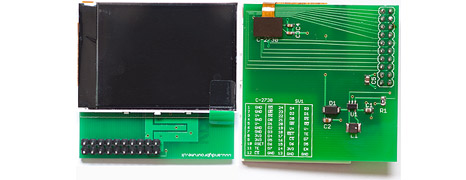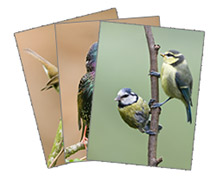In two of my previous articles I showed you how to reverse engineer the Nokia 2730 LCD for connecting to a device with 3.3V I/O’s and then I showed you how to build a 16-channel level converter for connecting devices together that have differing I/O level requirements. This article...
Nokia QVGA TFT LCD for the Arduino Mega. Graphics Library (part 2 of 2)
posted by Andy
In part 1 of this two part series I presented the hardware design and build for the Nokia 6300 TFT that shows how we can connect it directly to the external memory interface of the Arduino Mega and that by doing so we achieve the fastest possible interface between the TFT and the Arduino...
stm32plus: ILI9481 TFT driver
posted by Andy
The code presented in this article requires a minimum of version 3.0.0 of my stm32plus library. The TFT panel The ILI9481 is a driver IC for 480×320 (HVGA) TFT panels. These panels are typically found in mobile phones (for example the iPhone 3G although the display in...
stm32f4discovery: Up and running with the ARM Cortex M4
posted by Andy
The stm32f4discovery is the ARM Cortex M4 evaluation board from ST Microelectronics. I’ve been following the progress of the Cortex M4 since its launch, looking for the right time to dip in give the new MCU a test drive. That opportunity came with the launch of the stm32f4discovery...
Reverse engineering the Nokia 2730 QVGA LCD
posted by Andy
You may have noticed that I have a bit of a ‘thing’ for the little TFT displays that you can commonly get on ebay. There’s something satisfying about writing your own driver code and seeing one of these little panels come alive with your graphics. Why the 2730 LCD? It’s high resolution (320×240, 200ppi) which means that graphics will look good. It’s used in a lot of models: Nokia 5000, 2730, 5130, 5220, 7100. Good for availability. It’s cheap, as low as £3.99 on ebay. It supports 262K (18-bit) colour mode. It looks like I can find the connector for it. Don’t underestimate the difficulty of...
stm32plus: A full photoframe application
posted by Andy
The code presented in this article requires a minimum of version 2.0.0 of my stm32plus library. About this article For this next article in the series of stm32plus C++ demonstrations using the STM32F103 series of ARM Cortex M3 microcontrollers I thought that I’d take a...
stm32plus: ADS7843 touch screen driver
posted by Andy
The code presented in this article requires a minimum of version 3.0.0 of my stm32plus library. The ADS7843 My last few blog articles have presented stm32plus drivers for the HX8347A and ILI9325 controllers. Given that both of these panels came with touch screens I think...
stm32plus: ILI9325 TFT driver
posted by Andy
The code presented in this article requires a minimum of version 3.0.0 of my stm32plus library. The ILI9325 controller This second article in the series of documentation-by-example posts will present a C++ driver for 320×240 (QVGA) TFT LCD panels that have an ILI9325...





